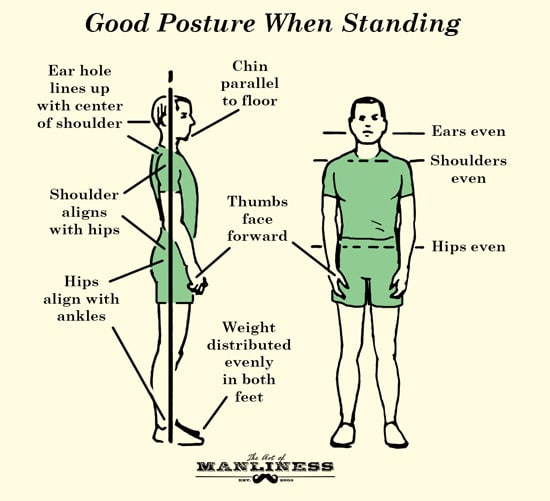
The Eight Limbs of Yoga were defined by the Sage Patanjali. Practicing each of these can lead to a heightened sense of health and spirituality. There are eight branches of yoga: Yamas, Niyamas, Pranayama, Dhyana, and Samadhi. Asana is the term for physical postures. These exercises are good for the mind and body. Pranayama can be described as the practice or breathing that purifies the chakras.
Both concentration and meditation are examples of dhyana. Although they may appear similar, concentration and meditation are very different. Concentration requires concentration, but meditation requires focus and awareness. For dhyana to be successful, one must first develop strength, stamina, and patience. Once a practitioner reaches this level, dhyana can be used to bring him or her to a higher spiritual level.

Asana is the physical act of concentrating. The second branch, called dhyana (deep meditation) involves active concentration. Dhyana requires calm concentration, which can make it difficult for beginners. Samadhi, the eighth limb, is the culmination and connection of all eight limbs of yoga.
Selfless service is another way to improve the benefits of yoga. It involves serving without expectation. This can be done to animals, people, and the entire world. This is a powerful method to transform your life and attain spiritual freedom. This is why yoga's most important aspect is selfless service. If you're serious, you can achieve a deeper sense and peace through the practice.
The eighth branch is dhyana. The first branch of this branch is dhyana. The second branch is samadhi (or surrender). The fifth branch is pratyahara. The eight branches of yoga are all related, and all are beneficial. Anybody can practice any of the eight yoga branches, regardless their experience. It is possible to be completely focused on your practice without any external aids.

All eight branches of yoga are possible to be combined or used separately. Some branches can overlap, while others may be specific to a certain body part. As they all have different benefits, many people can practice multiple branches of yoga. The eight different branches of yoga will help you find your way to Yoga. They all share a common goal, enlightenment. Yoga can be done in many forms to help you attain a higher level.
Ashtanga (a form of classical yoga) is based off the classification of Patanjali. The eight branches include Hatha, Karma Raja Kriya, Kriya, Kundalini and Raja. Each branch of yoga is suited for a certain type of practitioner. For instance, Karma is based on service, while Bhakti focuses on love, devotion, and union. Jnana is a branch in Hatha that focuses on knowledge.
FAQ
Is it more important to have mental health than work?
It is vital that everyone has a good mental health, especially those who work. If you feel stressed at work, you should try to relax by doing something fun like going out with friends, taking a walk outside, or listening to music.
Talking to your boss is a good idea if you have trouble relaxing. You might find ways to reduce your stress.
It is also important to take care of your health. It's important to eat right, exercise regularly, take enough rest, and get plenty of sleep.
How can one tell if someone has a mental disorder?
An individual may be diagnosed if they experience symptoms that disrupt their daily activities. The symptoms of mental disorders vary from person-to-person. The most common symptoms are feeling depressed, sad, anxious, guilty and hopeless, lonely or depressed, as well as guilt, shame, guilt, guilty, guilty, guilty, suicidal and worthless.
If a person meets at least three of the four criteria below, they may be diagnosed with a mental disorder.
-
Disturbed thoughts or feelings
-
Unruly behavior
-
Disturbance of functioning
-
Inability to relate to others
What can I do to improve my mental health and well-being?
Everyone needs mental health, especially when we feel stressed at work, school, home, or family. You can improve your mental health by exercising regularly, eating healthy foods, sleeping well, and spending quality time with family members. Exercise releases endorphins, which can make us happier. Eating healthy foods also helps our bodies function properly. A good night's sleep will give you energy throughout the day. And finally, spending quality time with loved ones improves our relationships and reduces stress.
What are some examples?
Any condition that causes major distress or impairment in functioning can be considered mental disorder. Mental disorders include anxiety, bipolar disorder (depression), schizophrenia, borderline personality disorders, obsessive-compulsive disorders, post-traumatic stress disorder (PTSD), eating disorders, substance abuse and other.
What are the five ways to improve wellbeing in your life?
A person's well-being can be defined as their "state of mental, physical, spiritual, or social well-being". Many factors can affect our well-being. These include family, work, family health, relationships with others, education, finances and community. Your first step to bettering your well-being, is to identify the areas in your life that require improvement. Next, take steps to improve these aspects.
These are five ways you can improve your well-being.
-
Exercise - Physical activity boosts endorphins which make us happier.
-
Sleep - More than 6 hours sleep per night can reduce stress and anxiety.
-
Nutrition – Healthy foods such as fruits & vegetables can boost your mood.
-
Meditation - Regular meditation can reduce stress and anxiety.
-
Socialization: Spending quality time together with our families and friends makes us happy.
Why is it important for improving emotional health?
Your emotional health is vital for your happiness and well being. Without emotional health, you will not be able work at your best. People suffering from depression often feel unable or unwilling to work. They may also experience anxiety, panic attacks, insomnia, and other symptoms. The good news about these conditions is that they can be successfully treated using medication and therapy.
How does mental illness affect our daily lives and daily activities?
Everyone is affected by mental illness at one time or another. The only difference between someone with mental illness, and those without, is the fact that they do not seek help. Talk to someone when you feel that something isn't right. There are many treatment options available for anxiety, depression and stress.
Statistics
- Similarly, for positive mental health, there is likely to be substantial agreement about some typical components (e.g., resilience to stress) 6, and controversy about more atypical components (e.g., career consolidation). (ncbi.nlm.nih.gov)
- In any given year, an estimated 18.1% (43.6 million) of U.S. adults ages 18 years or older suffered from any mental illness, and 4.2% (9.8 million) (healthypeople.gov)
- According to the National Alliance of Mental Illness (NAMI), one in five Americans experiences mental health issues which translates to more than 40 million adults a year. (doctorondemand.com)
- Similarly, while there is some agreement about the boundaries of typical mental disorders 2, there is likely less agreement about those for positive mental health. (ncbi.nlm.nih.gov)
- It does have some influence, but not nearly as much as we might think, so focusing less on attaining wealth will likely make you happier (Aknin, Norton, & Dunn, 2009); (positivepsychology.com)
External Links
How To
How to Care for Children with Autism
Autism spectrum disorder (ASD), a neurodevelopmental condition, is characterised by repetitive behavior and impairments in social communication. ASD is a condition that affects one out of 50 people in the world. There is no treatment.
The first signs typically appear around 18 months in infanthood. Most common symptoms include difficulty understanding emotions of others, lack eye contact, problems in language development, and difficulties learning new skills. These symptoms can lead to aggression, self-injury and depression.
This disease is not currently understood, but researchers believe genetics could play a role. ASD can be caused by environmental factors, such as infection, stress, diet, medications, vaccines and alcohol. Evidence suggests that certain viruses like rubella or measles could increase your risk of developing ASD later.
Early intervention and diagnosis can improve outcomes. However, many parents struggle with their child’s behavior once they are in school. Different treatment options are available depending on the severity and type of the problem. Research shows that therapy focused on improving social interaction and decreasing problem behavior can make a significant difference.